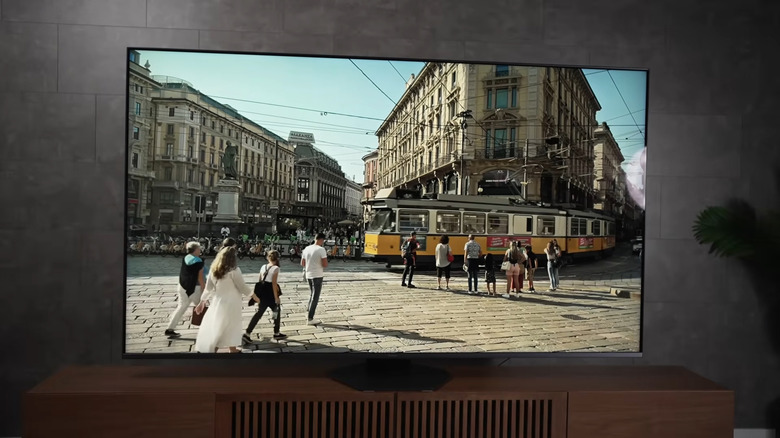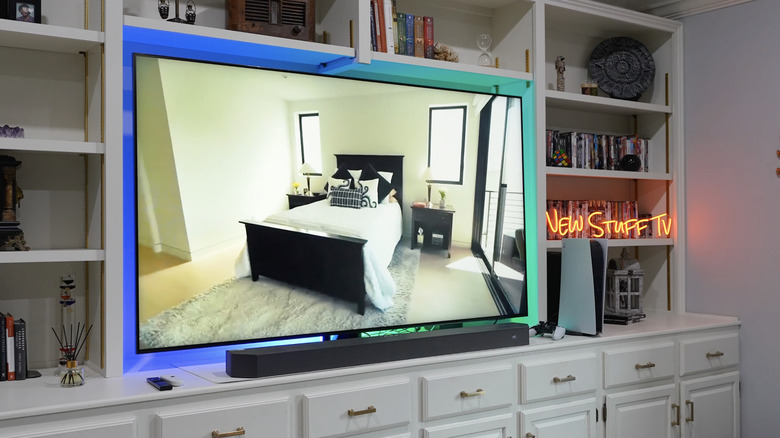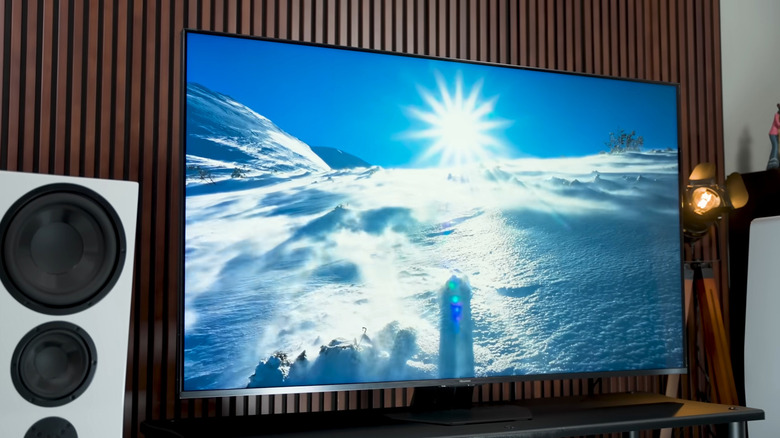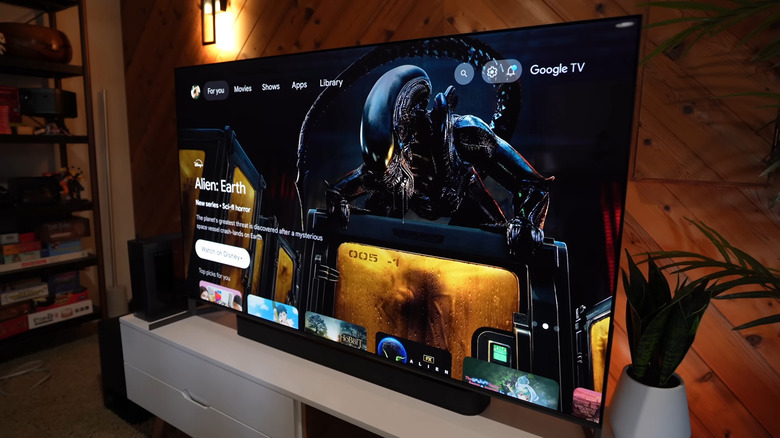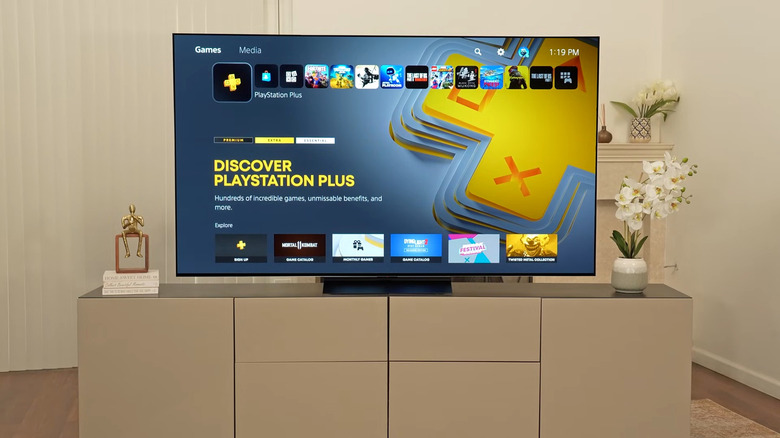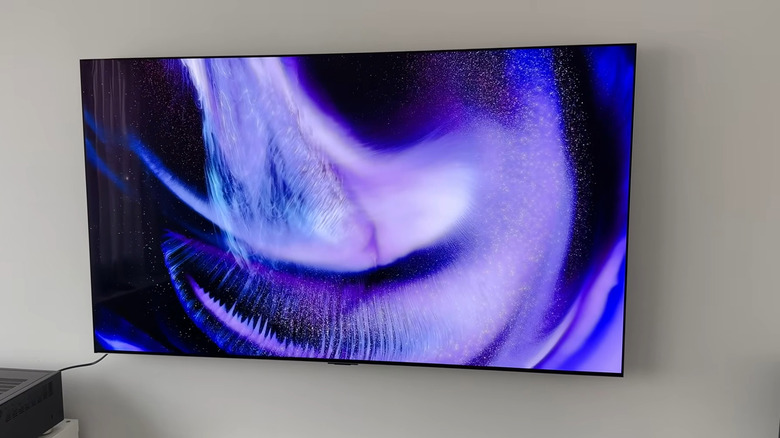5 Of The Best TVs For Playing Xbox Or PlayStation, According To Gamers
We may receive a commission on purchases made from links.
The PS5 and Xbox Series X have been on the market for five years now. Despite entering the later stage of their cycles, the quality of games thankfully hasn't slowed, with developers constantly raising the bar graphically and mechanically, making the most of the capabilities of the current-gen console. To unlock what these games have in store, you also need the best equipment to go with it, which, of course, includes a TV to match the consoles.
TV brands update their lineups a little faster than how often a new major console releases, finding new ways to one-up each other. Gaming has unsurprisingly become a key target for these brands to hone in on, which gives us some seriously attractive models to choose from at different price points. Whether you go for an OLED screen or not, many of the fan-favorite TVs for gaming come with ultra-fast response times and high refresh rates, but certain TVs offer different picture quality that can determine which would best be suited to your space. Also, pricing will play a huge role in overall performance. Here's a closer look at five of the best TVs that gamers say work great for PS5 and Xbox gaming in 2025.
LG OLED G5
LG's G Series first hit the market in 2021 with the G1, and since then LG has consistently set the standard for OLED displays. For G5 televisions, LG's more advanced EVO OLED panels make a return, achieving much higher brightness, alongside enhancing the color range, proving to be perfect for gaming.
I was fortunate enough to spend some time playing "Horizon: Forbidden West" on the G5 earlier this year, using the standard PlayStation 5, a game that has no shortage of vibrancy throughout its world. I've personally never seen a game on console look so stunning. The LG OLED G5 is capable of a 165Hz refresh rate, which is more than enough for both the PS5 and Xbox Series X's 120Hz maximum. 120Hz is the native rate for the TV, though. You also get a response of less than 0.1 milliseconds, so you shouldn't run into any issues on that front. If you're an Xbox Series X player, you'll also be able to enjoy Dolby Vision when using this TV.
The LG OLED G5 has received standout reviews so multiple outlets, alongside plenty of user reviews praising the outstanding picture quality, even in bright rooms. Some users also use it for PC gaming thanks to its incredible speed. As for the price, it's certainly not the cheapest. The 55-inch screen comes in at $2,499 as standard, but sits at $1,999 on LG's website at the time of writing.
Samsung Neo QLED
While OLED TVs are generally favored for gaming due to typically having better contrast and back levels, QLED models should still definitely be considered. If you'll be putting your new TV in a brighter room, you may benefit from the increased brightness QLEDs offer. Samsung introduced the idea of a QLED TV, with the Neo series being the current top-of-the-line range when it comes to console gaming.
There are quite a few different Neo models available in 2025, but all of them benefit from the mini LEDs to enhance color and contrast to get closer to what OLED is capable of. You have the choice between some 8K and 4K models, but as 8K isn't yet mainstream for gaming on console, a 4K screen is probably the better investment. Another benefit of Samsung's QLED screens is that they're more affordable compared to OLED counterparts, with models like the QN80F coming in at $1,297 as standard and the more capable QN90F at $1,597 in their 55-inch guises on Amazon. Prior models like the Q80D and QN90D models also remain competitive.
Native 120Hz is common across the range, even for more affordable models like the QN70F, but it comes with a slightly longer input delay. Still, the newer QN80F responds in 9.9 milliseconds, which is still more than quick enough for console games. Versatility is something that comes up frequently in user reviews for Samsung's Neo QLED TVs, with gaming unsurprisingly being one of the top uses.
Hisense U8QG
Another non-OLED TV that can help you save money while being packed full of features is the Hisense U8QG QLED. Its predecessor, the U8N, is also a solid pick if you want to spend even less, but the newest model in the series comes with some updates that make the increase in price worth it. The U8QG is another to use mini LEDs to naturally increase the brightness and clarity, but this TV sees a boost compared to the outgoing model. Further improvement that will benefit you outside of just PS5 and Xbox gaming is the 4.1.2 multi-channel speaker system, offering excellent sound to go with the visuals that receive plenty of praise from owners.
The U8N already had a 144Hz refresh rate, which is plenty for console gaming. Still, the U8GQ improves this to native 165Hz, so if you ever move over to PC for some immersive games exclusive to the platform, this TV will still work perfectly fine there. If you're on Xbox, the updated sound system also comes with Dolby Atmos, which will work on some games, as well as Dolby Vision. When it comes to PlayStation 5 performance, users still give the U8GQ heavy praise, with the Dolby features adding to the richness. Input delay comes in at a competitive 9.9 milliseconds. Alongside ticking all the essential boxes when it comes to gaming, Hisense's flagship mini-LED TV sits at a generous $997.99 as standard for the 55-inch model.
Sony Bravia 8 II
Moving back to OLED TVs, Sony has an option that is unsurprisingly geared more toward the PlayStation 5, but it should still be considered for the Xbox if you want one of the best pictures for gaming on the market today. Releasing earlier this year, the Sony Bravia 8 II is one of the high-end OLED TVs from Samsung, with a base price tag of $2,498 on Amazon to boot. A similar price point to the LG OLED G5, but Sony's offering has a few specific features that may make it a better choice for you, on top of the essentials.
For all-around performance, the Sony Bravia 8 II features a 120Hz refresh rate and native 4K resolution, matching the capabilities of both the PlayStation 5 and Xbox Series X. Reviews also praise the TV's response time. However, the Bravia 8 II proves itself as a top choice for the PlayStation 5 with console-exclusive features like auto HDR tone mapping to keep the color accuracy, as well as an auto genre picture feature that switches to game mode whenever you load one up, and reduces input lag drastically. Owners who use this TV for console gaming tend to have high praise, with some even calling it the best TV they've ever owned.
LG OLED C5
The LG OLED G5 may be considered the gold standard by many when it comes to OLED technology, but the brand offers a few more affordable alternatives as well. The C5 model stands out as one of the other best options within the LG range, marketed as a mid-range TV but still featuring excellent features for console gaming. Right now, you can pick up the LG C5 for $1,199 on LG's website, which is way below some of the leading OLED TVs you can buy brand new today.
Compared to LG's more powerful model, the C5 lags in some areas, but still has all the essentials for modern console gaming. The C5 has a maximum 144Hz refresh rate instead of 165Hz, but as the PlayStation5 and Xbox Series X top out at 120Hz, you'll still be able to comfortably hit the maximum frame rate. The 0.1-millisecond response time also carries over to the C5. A brightness boosting feature is included with the C5, but it won't manage to reach the same levels as the G5 in this area. The G5's higher price point also brings better HDR capabilities, offering stronger colors and contrast, but the C5 still receives praise for its outstanding picture quality, particularly when hooked up to a console. And for $800 less at the time of writing, the C5 is incredibly hard to beat at this price point.
Methodology
To select the TVs for this list, we first look at the individual capabilities of the models, ensuring that they offer specifications that can match the current generation of consoles in terms of performance, such as HDMI 2.1 ports, a high refresh rate, and low input lag. From there, we looked at consumer reviews of the TVs to make sure that gamers praise them for being great options for console gaming.
